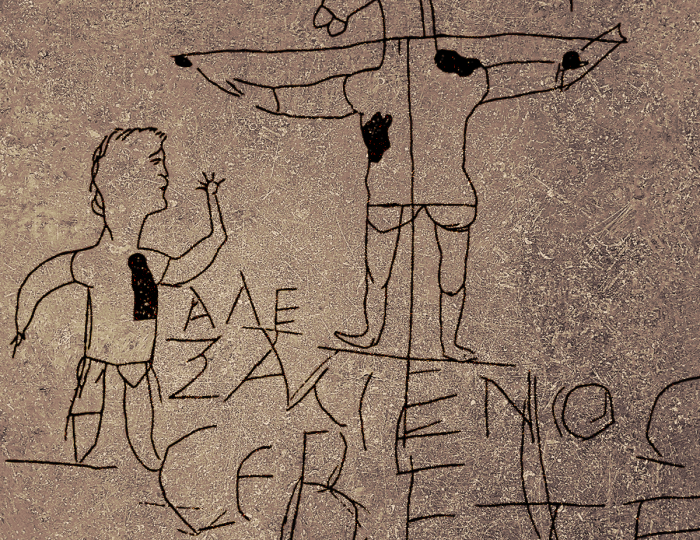Word for the Week
Short reflections on Bible passages, with a frontline focus...
Read

This is how God showed his love among us: he sent his one and only Son into the world that we might live through him. This is love: not that we loved God, but that he loved us and sent his Son as an atoning sacrifice for our sins. Dear friends, since God so loved us, we also ought to love one another. No one has ever seen God; but if we love one another, God lives in us and his love is made complete in us.
1 John 4:9-12
Would it surprise you to hear that the earliest known visual depiction of the crucifixion of Jesus makes fun of it?
It’s the ancient equivalent of schoolboy graffiti, but it’s significant nonetheless. Scratched into plaster, it depicts a figure with the head of a donkey hanging on a cross, underneath which stands a man with his hand raised in reverence. Below it is a caption which reads: ‘Alexamenos worships his God.’
To be clear, the ridicule is not that Jesus died, but that he was executed as a criminal in the most shameful way possible. That was something to mock.
And yet, for all its apparent strangeness, the Christian faith makes no sense without the cross.
The biblical writings provide a rich mosaic of images to unfold the significance of what’s really going on at the cross – as that which replays and regains what we lost in our first parents, forming a new humanity in the process; as that which brings about a release from slavery to one owner into the service of another; as the place where reconciliation between God and human beings is made, which will one day be extended to the whole cosmos; as that which enables us to be declared right with God and brought into covenant relationship with him and others; as the supreme victory over the powers of darkness and death…
And all made possible through the sacrifice of one in the place of others.
Apart from the explicit language here in John’s letter and elsewhere, repeated phrases such as ‘through his blood’ and ‘for our sins’ make clear the substitutionary nature of Jesus’ sin-bearing death. So it is as Jesus heads towards the cross, he takes on the role of the servant spoken of in Isaiah, suffering and dying on behalf of others, where ‘the punishment that brought us peace was on him’ (Isaiah 53:5).
Crucially, all this flows from God’s love. Far from involving a cold transaction, the cross is rooted in the heart and actions of the triune God – the abounding love of the Father, the atoning death of the Son, the applying grace of the Holy Spirit.
That love is then reflected in our own lives. Christ’s death not only provides the source of our salvation but the shape of our salvation, such that our daily life ratifies our core allegiance to Jesus – as we take up our cross to follow him.
Antony Billington
Theology Advisor, LICC